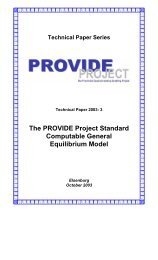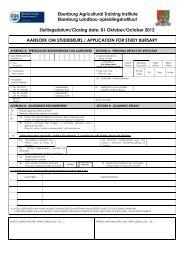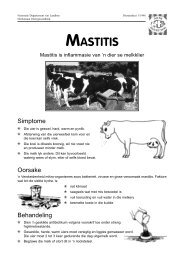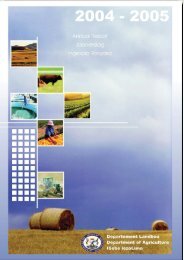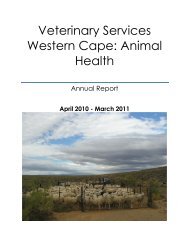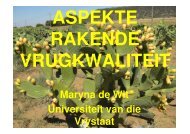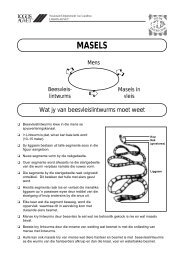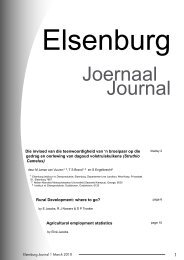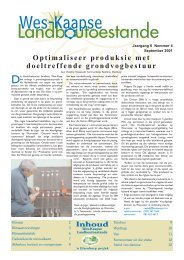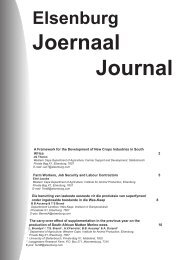honey bush tea - Department of Agriculture: Western Cape
honey bush tea - Department of Agriculture: Western Cape
honey bush tea - Department of Agriculture: Western Cape
You also want an ePaper? Increase the reach of your titles
YUMPU automatically turns print PDFs into web optimized ePapers that Google loves.
2.2.2 S<strong>of</strong>t drinks<br />
According to Euromonitor’s report in 2002 the world market for s<strong>of</strong>t drinks, May 2001,<br />
experienced an explosive growth especially in functional drinks. The functional<br />
category recorded an annual average growth rate <strong>of</strong> about 10% between 1995 and<br />
2000. This is believed to be spurred by spots nutrition and media influence. Although<br />
the terminology is therefore not yet established, varying according to the sources <strong>of</strong><br />
information. Some include enriched drinks, nutraceuticals drinks, herbal drinks, sports<br />
and energy drinks, whereas the others can only focus on the last two categories.<br />
Within the s<strong>of</strong>t drinks market, functional drinks show the highest growth even though<br />
they account for 3% <strong>of</strong> the total s<strong>of</strong>t drinks volume. This tendency is expected to speed<br />
up in future putting total forecasts for 2004 at 14 billion litres <strong>of</strong> functional drinks. The<br />
evolution <strong>of</strong> functional drinks varies from one region to another. The Asia Pacific<br />
Region including Japan, is the biggest market size, but records the smallest<br />
progression. The US market is still expanding at a rate above 10% per annum,<br />
whereas the European market is booming, with 15% growth between 1998 and 1999,<br />
although from a small volume basis. In world market share per category, enriched<br />
drinks come to the first position in most regions <strong>of</strong> the world, except in Japan, where<br />
nutraceuticals drinks dominate.<br />
Enriched drinks 30%<br />
Nutraceuticals drinks 21%<br />
Energy drinks 15%<br />
Herbal dinks 10%<br />
Sports drinks 9%<br />
Other functional drinks 12%<br />
Despite the above terminology and the fact <strong>honey</strong><strong>bush</strong> <strong>tea</strong> being a pleasant warm drink,<br />
it also has the features to be competitive in the ice <strong>tea</strong> market. This is one <strong>tea</strong> based<br />
drink that is experiencing an increasing popularity already. In 2001, the UK alone sold<br />
14 million litres despite the poor summer weather they had during that period<br />
(Datamonitor, 2003). Datamonitor also stressed that even if ice <strong>tea</strong> in Europe is<br />
11



